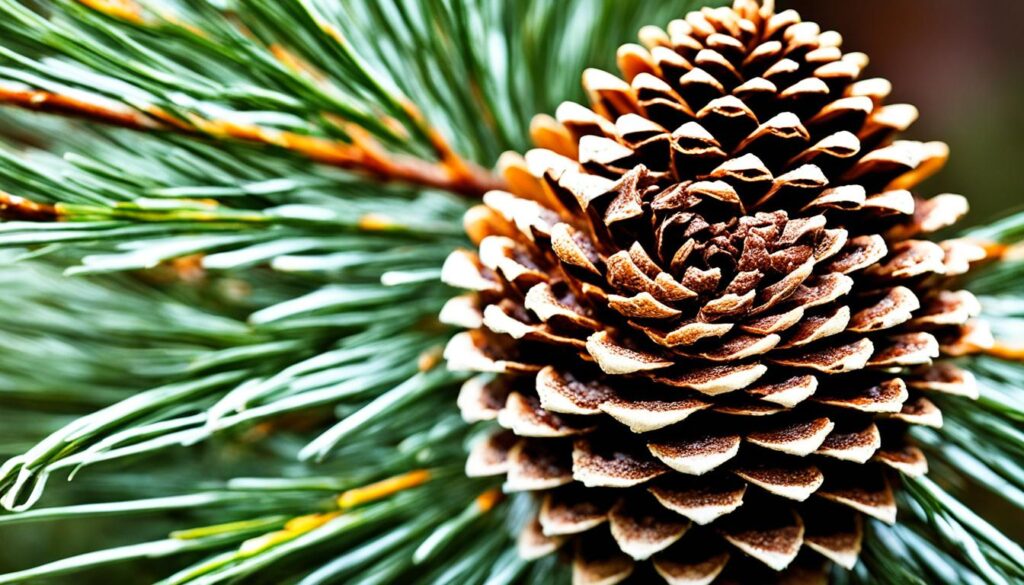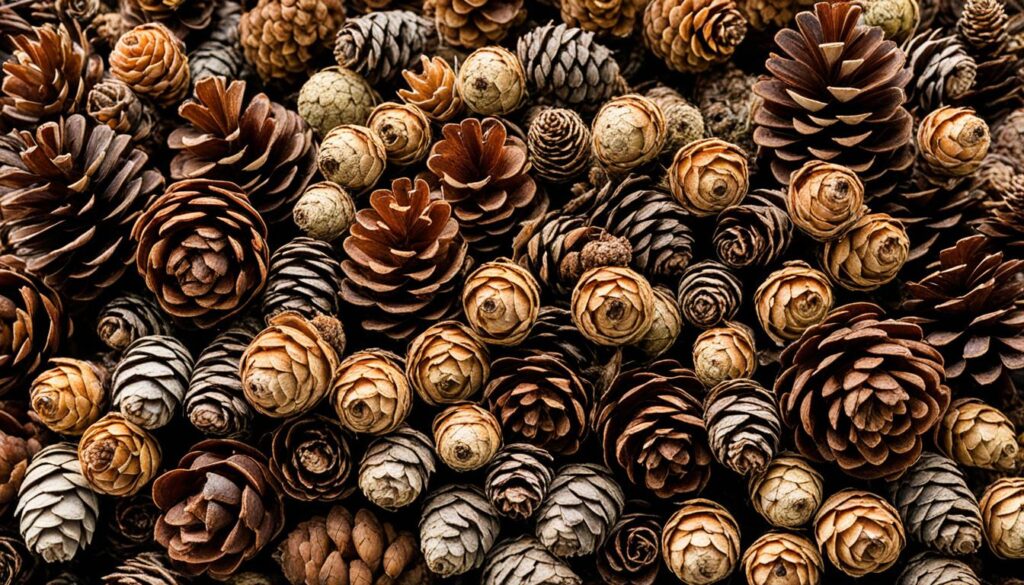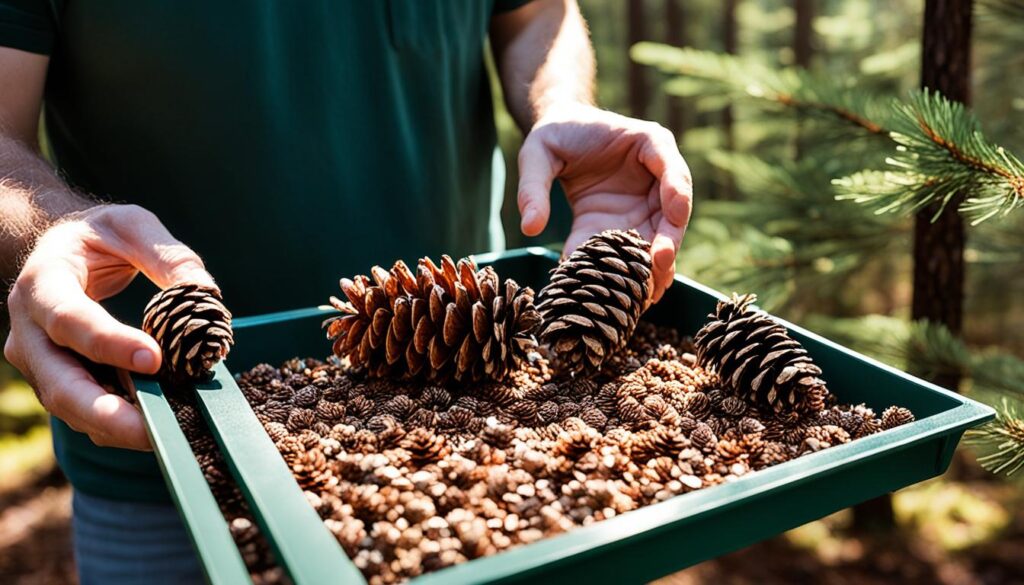Have you ever looked at the tall pine trees in your neighborhood and thought, «Can I grow one from a pinecone?» Growing your own pine tree from a seed is both exciting and fulfilling. But, where do you start? This guide will show you how to grow pinecone seeds and create your own pine tree garden.
Why is growing pinecone seeds interesting? It’s not just about watching a small seed grow into a big tree. It’s also about learning about how pine trees reproduce and spread their seeds. Let’s start this gardening journey together, exploring pine cones, gymnosperms, and how to grow your own pine tree from a pinecone.
Understanding Pine Cones and Gymnosperms
Pine cones are the key parts of pine, cedar, and spruce trees. They help these plants make seeds. Gymnosperms, meaning «naked seed» in Greek, are a group of plants that came before flowering plants. They have been around for millions of years.
What Are Gymnosperms?
Gymnosperms include conifers like pine trees, cycads, ginkgo, and Gnetales. These plants have been around for at least 280 million years. They are different from flowering plants in many ways.
They don’t have ovaries or pretty petals to attract bees. Their seeds are open on the surface, protected by cones. This way, they can live in many places, from hot to cold areas.
Male vs. Female Cones
Pine trees have both male and female cones. The male cones make pollen that the wind carries to the female cones. The female cones have seeds that will grow into new pine trees.
Some pine cones are big and easy to see, helping with pollination. Knowing the difference between male and female cones helps us understand how pine trees reproduce.

Pine cones show how diverse and old gymnosperms are. They give us a peek into the plant world’s history and how these plants have survived for millions of years.
Diversity of Pine Cones
The pine cone family shows a wide range of shapes, sizes, and looks. There are many types beyond the common pine and spruce cones. These include cones from baldcypress, ginkgo, and cycads. They are interesting for botanists and nature lovers, showing how these ancient plants have adapted.
Different Types of Pine Cones
Pine cones vary in shape and size, fitting the needs of each tree species. For instance, the Eastern white pine makes lots of cones every few years. This helps it survive by overwhelming predators during those years. The Giant Sequoia, on the other hand, has huge cones up to 20 inches long.
Some pine cones stay closed until a forest fire opens them. This is called serotiny. It helps the seeds spread in areas with many fires. Other cones open and drop seeds without fire, showing different ways to spread seeds.
The design of pine cones helps them open and close. This lets seeds spread out. Pine cones are important for many animals and help forests grow and spread.
| Pine Cone Variety | Distinctive Features | Ecological Significance |
|---|---|---|
| Eastern White Pine | Mast years with large cone production | Predator swamping, seed dispersal |
| Giant Sequoia | Massive cones up to 20 inches | Adaptation to large cone size |
| Serotinous Cones | Remain closed until exposed to heat | Seed release in fire-prone environments |
| Non-Serotinous Cones | Open and release seeds without stimuli | Diverse seed dispersal strategies |
Looking into pine cone varieties, exotic pine cones, and pine cone identification is exciting. It shows the amazing ways gymnosperms have adapted.

Harvesting pinecone seeds
To grow pine trees from seed, start by collecting seeds from mature, closed pine cones. Look for cones that are brown or tan and haven’t opened yet. This is the best time to collect pinecone seeds for successful pine seed extraction and pine cone seed harvesting.
Begin by gently shaking the cones to get any loose seeds out. Then, put the cones in a warm, well-ventilated spot to dry and open up. As they dry, the seeds will come out and can be taken out carefully.
To sort the seeds, put the extracted seeds in water. The good seeds will sink, and the bad ones will float. Throw away the ones that float because they won’t grow.

With patience and care, you can gather pinecone seeds and begin growing your own pine trees. Remember, it’s important to find mature, closed cones and let them fully open before taking out the seeds.
Germinating Pinecone Seeds
After collecting viable pine seeds, you’re ready to prepare them for germination. This often means doing a step called stratification. It helps break the seeds’ dormancy and starts the growth process.
Testing Seed Viability
Before starting the stratification, check if your pine seeds are good to go. You can do this with a simple float test. Put the seeds in water and watch. Seeds that sink are likely good, while those that float are probably not and should be thrown away.
Stratifying the Seeds
Pine seeds need a cold period, or stratification, to start growing. You can make this happen by putting the seeds in a plastic bag with moist sand or soil. Then, refrigerate them for 2-3 months. This mimics the winter they’d naturally go through, getting them ready to sprout when it gets warmer.



